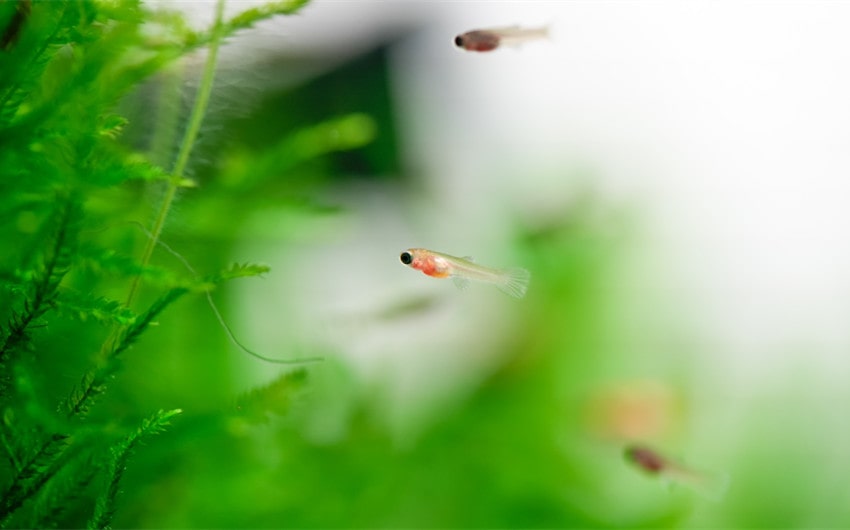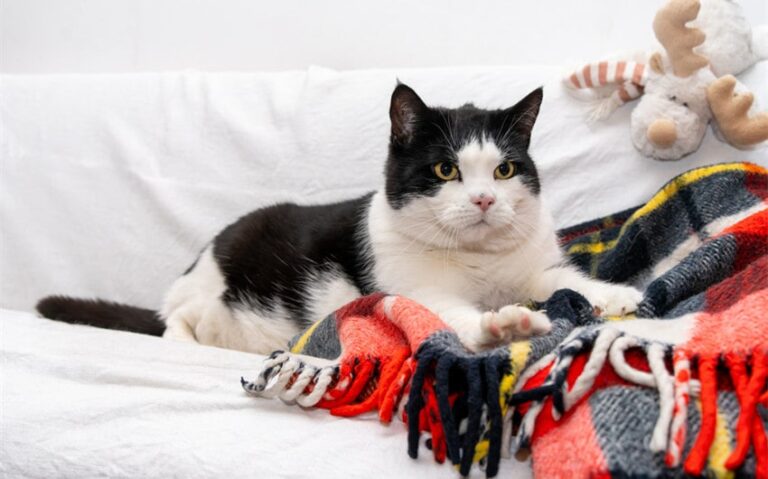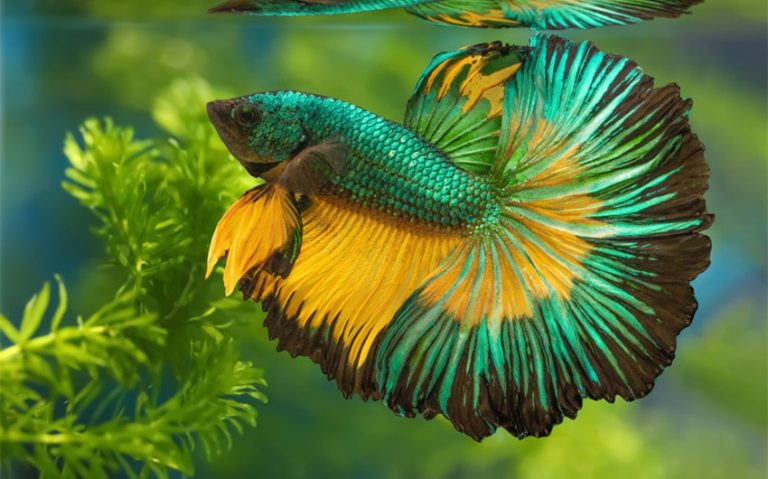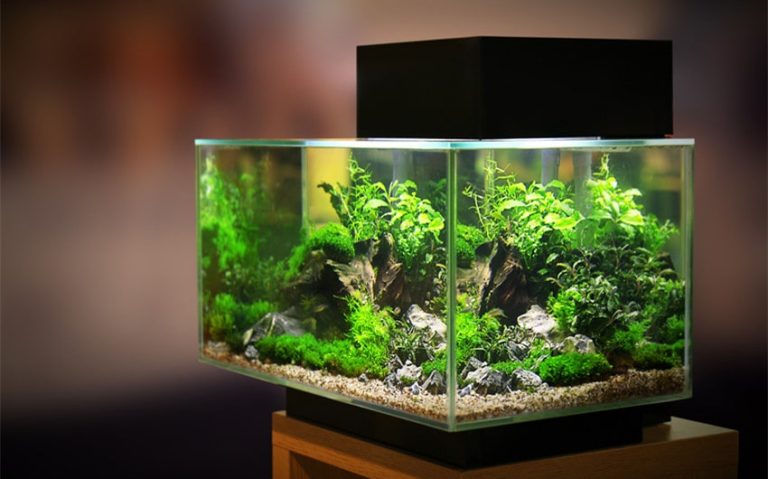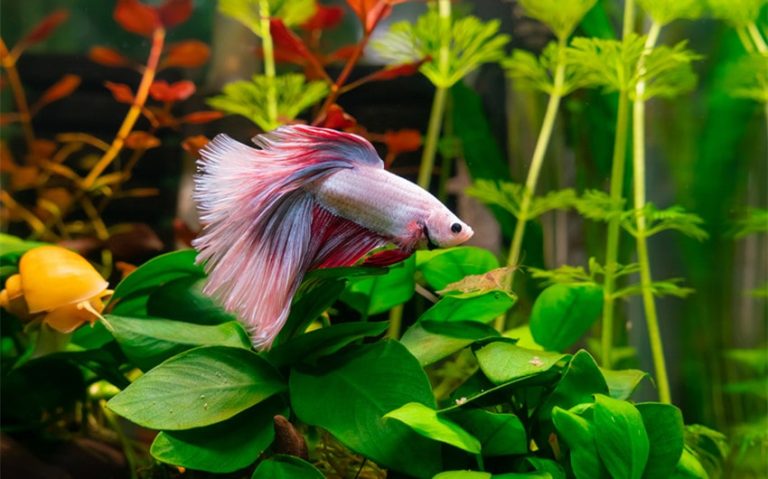What Do Baby Guppies Eat to Thrive in Your Aquarium?
If you’ve just welcomed baby guppies into your aquarium, you might be wondering “what do baby guppies eat?” Providing the right nutrition is crucial for their growth and overall health. Unlike adult guppies, baby guppies have delicate feeding needs that require specific foods to thrive.
From tiny live foods to special commercial fry blends, understanding what your baby guppies need to eat will help them grow into vibrant, healthy adults. Let’s explore the best food options for your little guppies and how to make sure they’re getting the nutrients they need.
What Baby Guppies Eat in the Wild
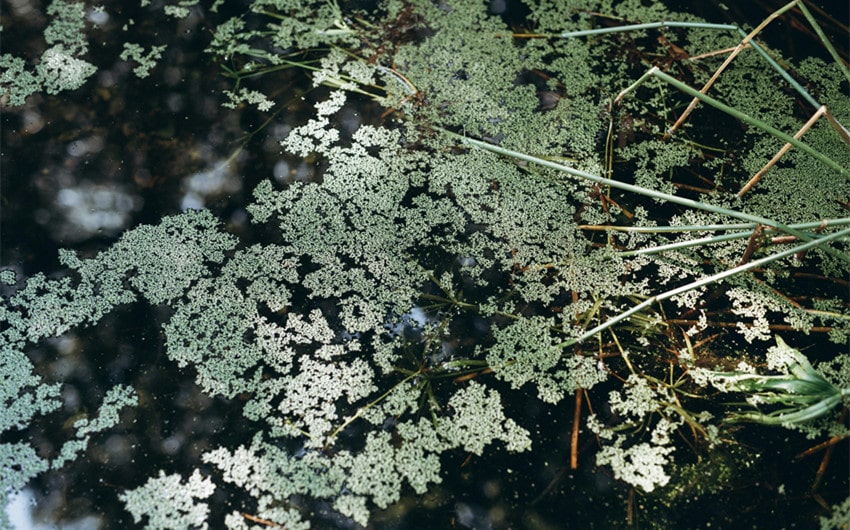
In the wild, baby guppies, also known as fry, have a much different diet compared to their aquarium counterparts. Guppies are naturally found in freshwater environments like streams, rivers, and ponds in Central and South America, where they live in areas with abundant plant and animal life. In their natural habitats, the food available to baby guppies is plentiful but often consists of tiny organisms that are suitable for their size.
Tiny Microorganisms
One of the primary sources of food for wild baby guppies is microorganisms such as infusoria—tiny protozoa and algae that live in the water. These microorganisms are small enough for fry to consume and are rich in nutrients, providing the essential proteins and fats that baby guppies need for rapid growth.
In the wild, baby guppies often feed on these microscopic creatures that thrive in the aquatic ecosystem, especially in areas where the water is rich in plant life and organic matter.
Algae and Plant Matter
In addition to microorganisms, baby guppies also graze on algae and decaying plant matter that may float on the water’s surface. Algae provides a source of fiber and essential nutrients, which are vital for the development of their digestive systems.
Plant matter in the wild can also provide vital minerals that help them develop a strong immune system and support their growth.
Small Invertebrates and Insect Larvae
As baby guppies grow a little bigger, they begin to consume small invertebrates and insect larvae. These include tiny water fleas, daphnia, and other small crustaceans, as well as the larvae of mosquitoes and other insects.
These creatures are rich in protein, which is crucial for muscle development and overall health. In the wild, baby guppies will often feed in the shallows, where such invertebrates are abundant.
Zooplankton
Baby guppies in the wild also feed on zooplankton, which consists of tiny, drifting organisms that are part of the aquatic food chain.
Zooplankton includes small crustaceans and larvae, providing baby guppies with essential nutrients to support their rapid growth in the early stages of life. These tiny creatures are abundant in nutrient-rich waters, offering fry a constant and easy food source.
Types of Foods You Can Feed Baby Guppies
When it comes to feeding your baby guppies, it’s important to offer them a variety of foods that mimic their natural diet and provide the essential nutrients for healthy growth. Unlike adults, baby guppies (fry) have small mouths and delicate digestive systems, so their food needs to be appropriately sized and rich in the right nutrients. Here’s a breakdown of the different types of foods you can feed your baby guppies to ensure they thrive:
1. Live Foods
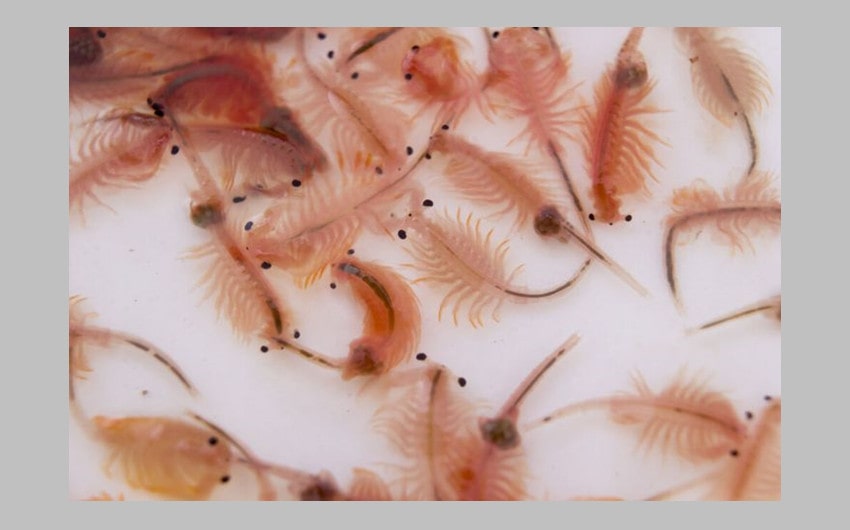
Image source: Pinterest
Live foods are a fantastic way to mimic the natural diet of baby guppies, as they provide protein, movement, and nutrition that fry are naturally inclined to hunt. These foods are rich in essential nutrients and can promote healthy growth and development.
Infusoria: One of the best live foods for baby guppies, infusoria consists of tiny microorganisms such as protozoa and other planktonic life forms. Infusoria is often found in well-established aquariums or can be cultured at home. It’s especially suitable for the tiniest guppy fry that are still too small to eat larger foods.
Brine Shrimp (Artemia): Another great option for slightly older fry, live brine shrimp are rich in protein and very nutritious. They’re perfect for baby guppies once they’re large enough to consume them. You can culture brine shrimp at home using hatcheries, or purchase them live or frozen from pet stores.
Micro Worms: These tiny worms are easy to culture and are a great live food source for baby guppies. They’re rich in protein and easy for fry to catch, providing a natural, healthy option for feeding. Micro worms are especially suitable for fry that are a bit larger than newly hatched guppies but still need small, easy-to-eat foods.
2. Frozen or Freeze-Dried Foods
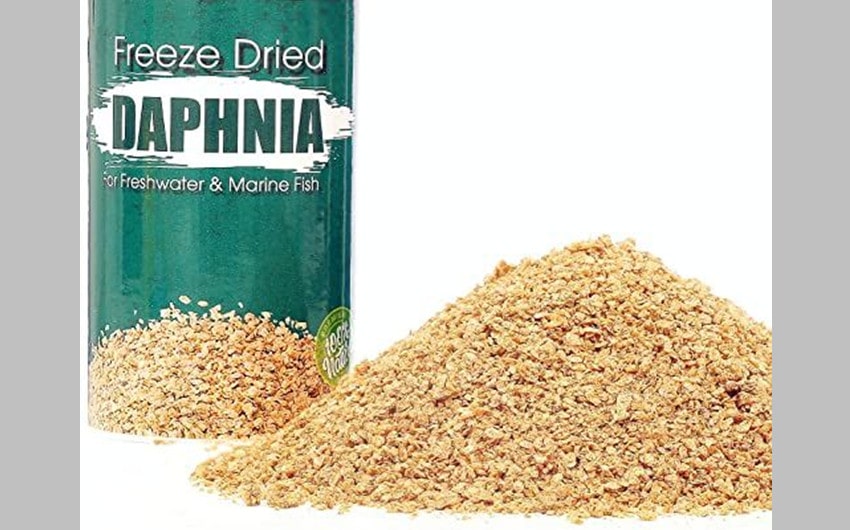
Image source: Pinterest
Frozen or freeze-dried foods are convenient and often a safer option than live foods, as they can help eliminate the risk of introducing diseases or parasites to your tank. These options are just as nutritious and can be more readily available than live foods.
Frozen Brine Shrimp: Frozen brine shrimp are a widely available option and are easy to store. They’re highly nutritious and can be defrosted in small portions for your baby guppies. Frozen brine shrimp are an excellent protein source for older fry, who can handle slightly larger food.
Freeze-Dried Daphnia: Daphnia, or water fleas, are a type of zooplankton found in natural environments that baby guppies would typically eat. Freeze-dried daphnia provides a good source of fiber and protein. Be sure to soak freeze-dried daphnia before feeding, as it can expand in your fry’s stomach if given too dry.
Frozen Micro Worms or Mosquito Larvae: Some pet stores offer frozen micro worms or mosquito larvae, which are great for baby guppies that are a little bigger. These foods are rich in protein and nutrients that encourage healthy muscle and bone development.
3. Flake and Pellet Foods
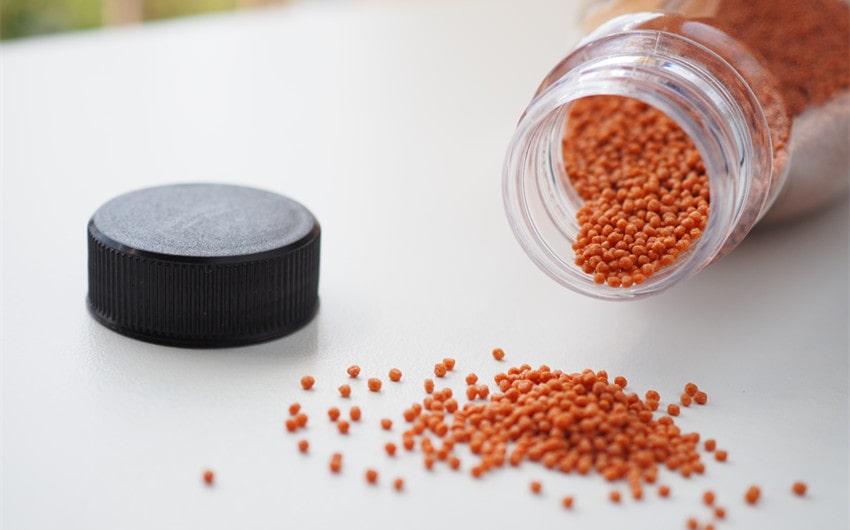
While baby guppies prefer live foods, you can supplement their diet with specially formulated flake foods and pellets designed for fry. These options are convenient, nutritious, and often packed with vitamins and minerals that promote growth.
High-Quality Fry Food Flakes: Available at most pet stores, specially formulated fry food flakes contain balanced nutrients like proteins, fats, and essential vitamins. They are designed to be small enough for baby guppies to eat and digest easily. When feeding flakes, crush them into finer pieces if needed to ensure they’re small enough for your fry to consume.
Pellet Foods for Fry: Pellet foods can be another great option for baby guppies. Look for ones that are specifically made for fry, as they will be smaller and contain the proper nutrient balance for young guppies. Be cautious with pellets, though, as they can be too large for newborn guppies and may sink too quickly, making it harder for the fry to access them.
4. Vegetable Matter

While guppies are primarily carnivorous, offering some plant-based foods can be beneficial for baby guppies, providing fiber and essential minerals that aid in digestion and overall health. Vegetables also help balance their diet and ensure they receive all necessary nutrients.
Blanched Vegetables: Small pieces of blanched spinach, zucchini, or lettuce can be offered to baby guppies once they’re a bit older. Be sure to blanch the vegetables to soften them and make them easier to consume. Chop them into small pieces to prevent choking hazards.
Spirulina Powder: Spirulina is a type of algae that is rich in protein, vitamins, and minerals. You can sprinkle a small amount of spirulina powder into your aquarium, as it will break down into smaller particles that baby guppies can graze on. This is particularly useful for encouraging good digestion and providing essential nutrients.
How Often Should Baby Guppies Be Fed?
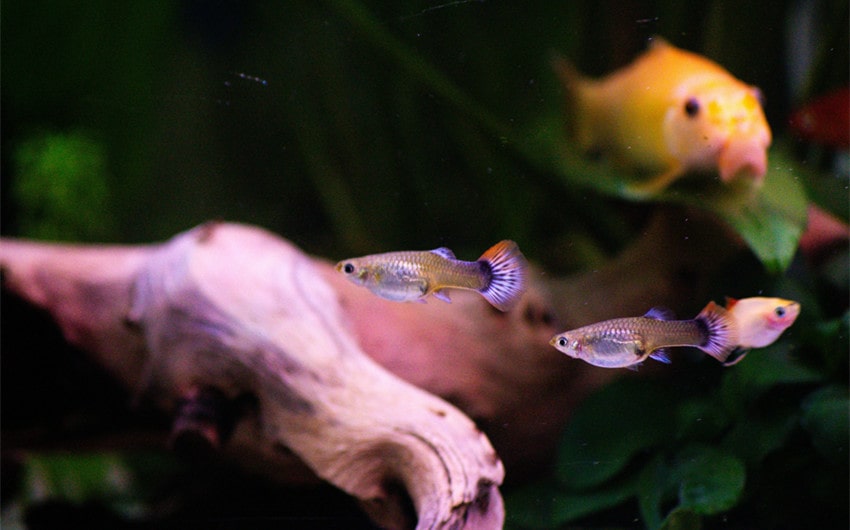
aby guppies need frequent, small meals to support their rapid growth and high metabolism. Ideally, feed them 3 to 5 times a day. This ensures they get enough nutrients without overloading their delicate digestive systems. Here’s a quick guide:
- Morning, Midday, and Evening Feedings: Offer small meals throughout the day, starting with a pinch of food per feeding.
- Portion Sizes: Only provide as much as they can eat in 5 minutes. Remove uneaten food to avoid polluting the tank.
- Adjust as They Grow: In the first week, feed fine foods like infusoria. As they grow, introduce larger foods like brine shrimp and crushed flakes.

